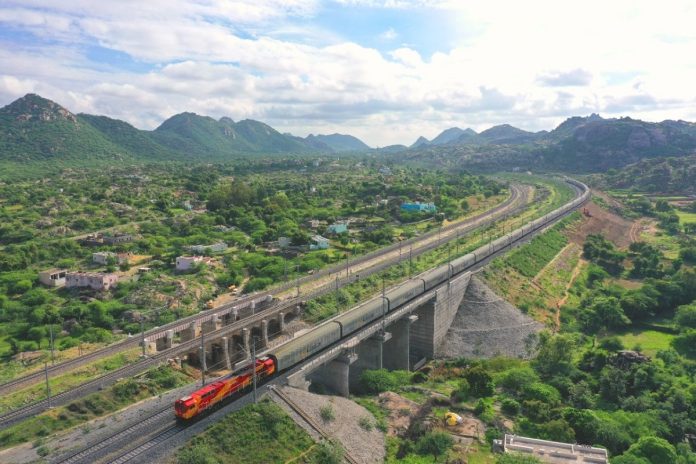A recent trial carried out by the Agra Division of North Central Railway has yielded promising results for, the Kavach, anti-train collision system, which was tested successfully at a speed of 160 kmph.
According to reports, the system was tested on a WAP-5 semi-high-speed engine, operating on the Palwal-Mathura section on 19 January.
WAP-5 locomotives, known for pulling passenger coaches at speeds of 160 kmph, are commonly used in trains such as Shatabdi and Gatimaan Express.
This successful test marks a significant advancement towards the Indian Railways’ ambition of establishing a semi-high-speed rail network.
Currently, Kavach is deployed on routes where trains operate at a maximum speed of 130 kmph.
However, with the introduction of trains like Vande Bharat, capable of running at 160 kmph, it becomes crucial for the railway infrastructure to be upgraded to accommodate semi-high-speed operations.
What is Kavach?
Kavach was developed by the Research Design and Standards Organisation (RDSO) under Indian Railways in collaboration with three Indian vendors — Medha Servo Drives Pvt Ltd, HBL Power Systems Ltd and Kernex Microsystems.
It has been adopted as our National Automatic Train Protection (ATP) System.
Since 2016, the Railways have been carrying out field tests for Kavach on passenger trains, with further operational improvements in the works.
As part of the new system, railway tracks, signalling systems on railway tracks, and the engines of trains are installed with radio frequency devices (without relying on a central server) that continuously send signals back and forth on a real-time basis to indicate that the track on which the train is operating has no obstacles.
This system effectively controls the train’s speed and automatically applies brakes when required, particularly in situations where the loco pilot may not be able to do so. Similar safety systems are followed in other countries.
Railway tracks will be equipped with pressure sensors capable of detecting weights exceeding 500 kg. These sensors will then transmit signals to the train’s engine, prompting the automatic application of brakes. Obstacles that are up to 10 km ahead will be detected by devices installed on railway tracks.
The features include transmitting line-side signals to the train cab, which is beneficial in high-speed and foggy conditions.
As per a report on the progress of Kavach, so far 1,659 km of railway line has been covered and an additional 500 km will be covered by March this year. In the next three years, at least 5,000 km will be covered.
What Hinders the Maximum Speed?
While the successful testing is a positive stride for the rail network, the crucial need still remains for the railways to upgrade tracks meeting requirements for managing maximum speeds achievable by semi-high-speed trains in India’s railway network.
According to railway officials, the only 125 km stretch, divided into three parts between Delhi and Agra, currently permits trains to operate at a maximum speed of 160 kmph. However, even these tracks are not entirely free of train traffic, hindering engines from reaching their maximum speed.
Across all other sections in India, trains are limited to a maximum speed of 130 kmph.
As efforts are underway to reinforce railway tracks, the Mumbai-Ahmedabad-Delhi (1483 km) and Howrah-Delhi (1525 km) rail corridors are poised to be among the first to support trains running at 160 kmph.


